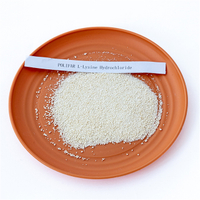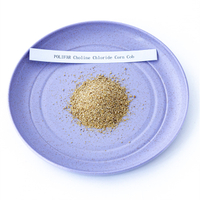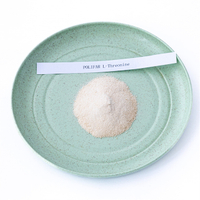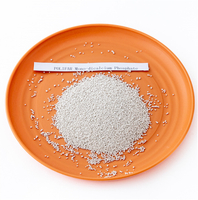Views: 0 Author: Site Editor Publish Time: 2022-11-14 Origin: Site








Gelatin is a macromolecular hydrocolloid, which is the product of partial hydrolysis of collagen. Colorless to light yellow solid in powder, flake or block. Shiny, odorless, tasteless. The relative molecular mass is about 50,000 to 100,000. The relative density is 1.3 to 1.4. It is insoluble in water, but when immersed in water, it can absorb 5 to 10 times of water and swell and soften. If the aqueous solution is boiled for a long time, the properties will change due to decomposition, and no gel will form after cooling. Insoluble in ethanol, ether and chloroform, soluble in hot water, glycerol, propylene glycol, acetic acid, salicylic acid, phthalic acid, urea, thiourea, thiocyanate and potassium bromide. This product does not solidify when the concentration is below 5%, and usually forms a gel with a solution of 10% to 15%. The temperature of gelation varies with concentration, co-existing salts and PH. Viscosity and gel strength vary with relative molecular mass distribution and are affected by PH, temperature, and electrolytes. If the solution of this product encounters formaldehyde, it becomes an irreversible gel that is insoluble in water. This product is easily hygroscopic and corrupted by bacteria, so care should be taken when storing it. When hydrolyzed, various amino acids can be obtained.

Gelatin can be divided into photographic gelatin, edible gelatin and industrial gelatin according to its properties and uses. According to different uses, the quality requirements of gelatin are also different. When used as a binder, the main requirement is the bonding strength. When used in photography, food, medicine and other fields, the purity of the product is emphasized. This article mainly introduces the application of gelatin in food, including the following:
1. What is edible gelatin
Edible gelatin is a hydrolyzed product of collagen. It is a fat-free, high-protein, cholesterol-free food thickener. It uses the collagen of the bones and skins of pigs, cattle, sheep and other animals. It is processed by denaturation and degradation. Contains more than 8 kinds of L-type amino acids, is a pure protein. Free of fat and cholesterol. Easily absorbed by the human body, gelatin food made of wool. It has a certain curative effect on certain diseases, especially for the development of children, and has ideal nutritional value. After eating, it will neither make people fat nor cause physical decline. Gelatin is also a powerful protective colloid with strong emulsifying power. After entering the stomach, it can inhibit the aggregation of proteins such as milk and soy milk caused by gastric acid, thereby facilitating food digestion.
2. Application of edible gelatin
 | Candy Additives |
According to reports, more than 60% of the world's gelatin is used in the food and confectionery industry. In candy production, gelatin is used to produce soft candies such as milk candy, protein candy, marshmallow, marshmallow, crystal flower candy, and gummy candy. Gelatin has the function of absorbing water and supporting the skeleton. After the gelatin particles are dissolved in water, they can attract and interweave with each other to form a network structure of stacked layers, and condense as the temperature drops, so that sugar and water are completely filled in the gel gap, so that the soft candy can maintain a stable shape , it will not deform even under heavy load. The general dosage of gelatin in candy is 5% to 10%. The best effect is when the gelatin dosage is 6% in the crystal fudge. The addition of gelatin in gummy candy is 6.7%. 0.6% to 3% or more in nougat. The amount added to the thick syrup of candy mucus is 1.5% to 9%, and the ingredients of sugar-flavored lozenges or jujube candies are required to contain 2% to 7% of gelatin. In the production of candy, gelatin is more elastic, tough and transparent than starch and agar, especially when producing soft candy and milk candy with sufficient elasticity and full shape, high-quality gelatin with high gel strength is required.

 | Frozen Food Improver |
In frozen foods, gelatin can be used as a jelly. Gelatin jelly has a low melting point, is easily soluble in hot water, and has the characteristics of melting in the mouth. It is often used to make meal jelly, grain jelly, etc. Gelatin can also be used to make jellies. Gelatin jelly does not crystallize in warm, unmelted syrup, and warm jelly can be re-gelled after the curd is broken up. As a stabilizer, gelatin can be used in the production of ice cream, ice cream, etc. The function of gelatin in ice cream is to prevent the formation of coarse ice crystals, maintain fine tissue and reduce the melting speed. For a good ice cream, the gelatin content must be just right. The general dosage of gelatin in ice cream is 0.25% to 0.6%. Any gelatin with jelly strength can make good ice cream, but different strengths must be matched with corresponding concentrations.

 | Meat Product Improver |
Gelatin is added to meat products as a jelly agent for the production of fragrant wild pork, aspic, canned ham, mouth strips, veal, ham pie, canned meat and other products, which increases the output and quality. Gelatin also acts as an emulsifier for some meat products, such as emulsifying the fat in meat sauces and creamy soups, and protecting the original character of the product. In canned food, gelatin can also be used as a thickening agent, and powdered gelatin is often added, or a thick jelly made of one part gelatin and two parts water can be added.
 | Beverage Clarifying Agent |
Gelatin can be used as a clarifying agent in the production of beer, fruit wine, dew, fruit juice, rice wine, beverages and other products. Its mechanism of action is that gelatin and tannin can form flocculent precipitation. After standing, the flocculent colloidal particles can be adsorbed, coagulated, and co-precipitated with turbidity, and then removed by filtration. For different beverages, gelatin can be used with different substances to achieve different effects. For example, in the production process of mulberry juice, gelatin needs to act as a clarifying agent together with tannin and silica gel. For almond milk beverage, gelatin can be used as a complex thickener together with sodium alginate to make a milk beverage with unique flavor and good taste. For different beverages, the amount of gelatin added is also different. In fruit juice drinks, the amount of gelatin added is 2% to 3%, and an aqueous solution containing 1% gelatin is used when clarifying bayberry juice. In beer clarification, an aqueous solution containing 0.5% gelatin was used. The dosage of gelatin in clarified wine is 0.1-0.3g/L. In the production of tea beverages, for different tea beverages, gelatin can be used in combination with different substances to achieve the purpose of improving the quality of tea beverages. For example, in the preparation process of dark tea, the combined action of gelatin and silica gel can prevent the dark tea beverage from becoming cloudy due to long-term storage. In the preparation process of green tea, after being treated with the mixture of gelatin and vinylpyrrolidone, the green tea cold drink can obtain good palatability.

 | Food Coating Materials |
In recent years, Japan and other countries have used gelatin for food coatings. Coating gelatin on food surface has the following advantages:
(1) When two different foods are combined, coating gelatin can inhibit the browning reaction.
(2) To prevent food from absorbing moisture and stiffness, coating edible gelatin on the surface of powdered and granular sugars can prevent sugars from absorbing moisture and avoid caking.
(3) It can make the surface of food shiny and improve the quality of food.
(4) It can prevent food spoilage and oxidation. The coating formed by gelatin with a concentration of 10% to 15% is suitable for ham, cured meat, sausage and cheese, etc., which can prevent food spoilage and prolong the preservation of food.
(5) Gelatin is used as a stabilizer to prevent the product from shrinking and deforming.
(6) Preservation effect. Add gelatin solution to the sugar solution of soaking fruits and vegetables to form a film on the surface of fruits and vegetables, which can ensure the freshness and natural flavor of food.
In food production, gelatin is also used to make cakes and various icings. Due to the stability of the gelatin, the icing does not penetrate into the cake as the liquid phase increases, even on hot days, and also controls the size of the sugar crystals. Gelatin can also be used to make colorful beads of colorful ice cream, sugar-free cans, etc. In food packaging, gelatin can be synthesized into gelatin film. Gelatin film is also called edible packaging film and biodegradable film. It has been proved that gelatin film has good tensile strength, heat sealability, high gas barrier, oil barrier and moisture barrier properties. The biodegradable films synthesized with gelatin are mainly used for fruit preservation, meat preservation, food packaging or direct consumption.
If you want to know more about food thickeners, such as carboxymethyl cellulose, xanthan gum, sodium alginate, welcome to visit our website www.polifar.com.






